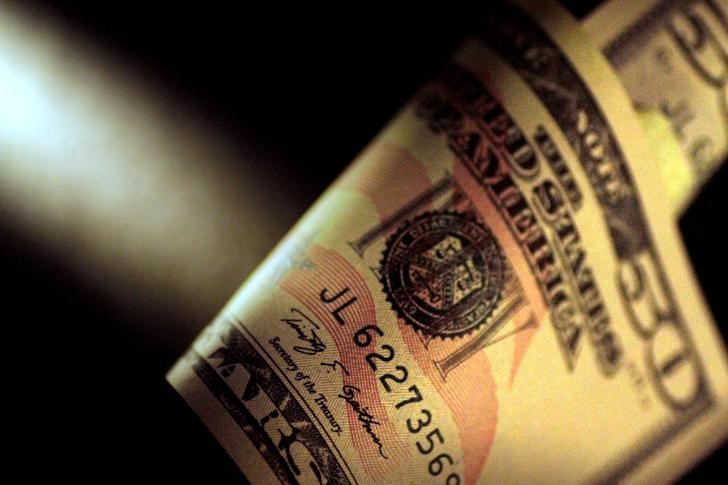By Gina Lee
Investing.com – The dollar was down on Tuesday morning in Asia, just above a one-week low hit during the previous week, as concerns that the new omicron COVID-19 variant would derail the U.S. economic recovery and delay U.S. Federal Reserve interest rate hikes subsided.
The U.S. Dollar Index that tracks the greenback against a basket of other currencies was down 0.21% to 96.135 by 11:07 PM ET (4:07 AM GMT). The index was up from the low of 95.973 hit on Friday, when it suffered its biggest one-day drop since May 2021.
The USD/JPY pair inched up 0.10% to 113.64.
The AUD/USD pair inched 0.08% to 0.7146 and the NZD/USD pair inched up 0.06% to 0.6828.
The USD/CNY pair was down 0.24% to 6.3720. Chinese data released earlier in the day showed that the manufacturing purchasing managers index (PMI) was at 50.1, while the non-manufacturing PMI was at 52.3, in November.
The GBP/USD pair inched up 0.07% to 1.3321.
The World Health Organization warned of a "very high" risk of infection surges from omicron, with some countries already tightening border controls. However, U.S. President Joe Biden said that the U.S. would not reinstate lockdowns, which gave investor sentiment a small boost.
Meanwhile, U.S. Federal Reserve Chairman Jerome Powell still expects inflation to recede over 2022 as supply and demand come into better balance. However, he added on Monday that the “recent rise in COVID-19 cases and the emergence of the omicron variant pose downside risks to employment and economic activity and increased uncertainty for inflation.”
Increased inflationary pressures could potentially speed up interest rate hikes, but Omicron's discovery initially saw investors push back bets for Fed monetary policy tightening because of the risk to growth.
"A less dire assessment of omicron has enabled the dollar to claw back some of its losses," but "the somewhat underwhelming bounce in global markets suggests that there is still a heightened level of concern about the variant," Westpac analysts said in a note.
Continued strength in the U.S. economy will buoy the greenback, while the Australian dollar continues to look weak and a break below $0.7106 "just looks like a matter of time,” the note added.
The euro was flat at $1.12955, after falling to a nearly 17-month low of $1.1186 as the European Central Bank sticks to its dovish stance on inflation.
